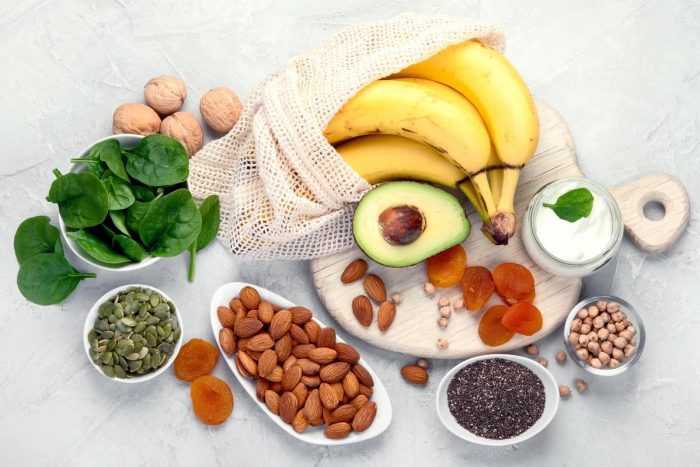Medical Compass: Take control of your hypertension with lifestyle adjustments
Drugs may not be necessary in early stages
By David Dunaief, M.D.

High blood pressure affects over 48 percent of U.S. adults (1). This scary number means that almost 50 percent of us are at increased risk for heart attack and stroke, the two most frequent causes of death (2). It also puts us at higher risk for chronic kidney disease and dementia (3).
Hypertension severity is categorized into three stages, or levels of severity, each with a different recommended treatment regimen. When the stages were created in 2017, what we used to call “prehypertension” was split into two new categories: elevated blood pressure and hypertension stage 1.
Elevated blood pressure is defined as systolic blood pressure (the top number) of 120-129 mmHg and diastolic blood pressure (the bottom number) of less than 80 mmHg. Stage 1 includes systolic blood pressure of 130-139 mmHg or diastolic blood pressure of 80-89 mmHg (4). You can find a simple chart of all levels on The American Heart Association’s website: www.heart.org.
Both have significant consequences, even though there are often no symptoms.
In an analysis of the Framingham Heart Study, researchers found that those with prehypertension experienced a 3.5-fold increase in the risk of heart attack and a 1.7-fold increase in the risk of cardiovascular disease (5). Many other studies support these increased risks (6, 7). This is why it’s critical to address increased blood pressure, even in these early stages.
The good news is that new and extended studies have given us clearer insights about effective treatments, stratifying our approaches to improve outcomes.
What’s the best treatment for elevated blood pressure?
The Joint National Commission (JNC) 8, the association responsible for guidelines on the treatment of hypertension, included lifestyle modifications at the top of its recommendations for elevated blood pressure (8).
Lifestyle changes include dietary changes. A Mediterranean-type diet or the DASH (Dietary Approaches to Stop Hypertension) diet are both good options.
Any diet you select should focus on increasing your intake of fruits and vegetables and reducing your daily sodium consumption to no more than 1500 mg (two-thirds of a teaspoon) (9). You should also ensure you exercise, manage your weight, and consume no more than modest amounts of alcohol (1 or fewer drinks for women and 2 or fewer drinks for men on a daily basis) (8).
Some studies have also shown that a potassium-rich diet helps to reduce blood pressure (9). Fortunately, foods like fruits, vegetables, beans and legumes have significant amounts of potassium. However, do not take potassium supplements unless instructed for other reasons by a physician; high potassium can be very dangerous and can precipitate a heart attack.
Some drugmakers have advocated for using medication to treat elevated blood pressure. The Trial of Preventing Hypertension (TROPHY) suggested the use of a hypotensive agent, the blood pressure drug candesartan to treat prehypertensive patients (10)(11). The drug reduced the incidence of hypertension significantly compared to placebo over two years. However, after stopping therapy, the following two years showed only a small benefit over placebo. The study was funded by Astra-Zeneca, which made Atacand, a brand version of the drug.
In an editorial, Jay I. Meltze, M.D., a clinical specialist in hypertension at Columbia University’s College of Physicians and Surgeons, noted that the results were interpreted in an unusually favorable way (12).
Since elevated blood pressure responds well to lifestyle changes, why add medication when there are no long-term benefits? I don’t recommend using medication to treat elevated blood pressure patients, and the JNC8 agrees.
Do lifestyle changes treat Stage 1 hypertension?
For those with Stage 1 hypertension, but with a low 10-year risk of cardiovascular events, these same lifestyle modifications should be implemented for three-to-six months. At this point, a reassessment of risk and blood pressure will determine whether the patient should continue with lifestyle changes or if they need to be treated with medications (13).
Your physician should assess your risk as part of this equation.
I am encouraged that the role of lifestyle modifications in controlling hypertension has been recognized and is influencing official recommendations. When patients and physicians collaborate on a lifestyle approach that drives improvements, the side effects are only better overall health.
References:
(1) cdc.gov. (2) NCHS Data Brief. 2022;456. (3) Hypertension 2020;75:285-92. (4) heart.org. (5) Stroke 2005; 36: 1859–1863. (6) Hypertension 2006;47:410-414. (7) Am Fam Physician. 2014 Oct 1;90(7):503-504. (8) J Am Coll Cardiol. 2018 May, 71 (19) 2176–2198. (9) Arch of Internal Medicine 2001;161:589-593. (10) N Engl J Med. 2006;354:1685-1697. (11) J Am Soc Hypertens. Jan-Feb 2008;2(1):39-43. (12) Am J Hypertens. 2006;19:1098-1100. (13) Hypertension. 2021 Jun;77(6):e58-e67.
Dr. David Dunaief is a speaker, author and local lifestyle medicine physician focusing on the integration of medicine, nutrition, fitness and stress management. For further information, visit www.medicalcompassmd.com or consult your personal physician.







